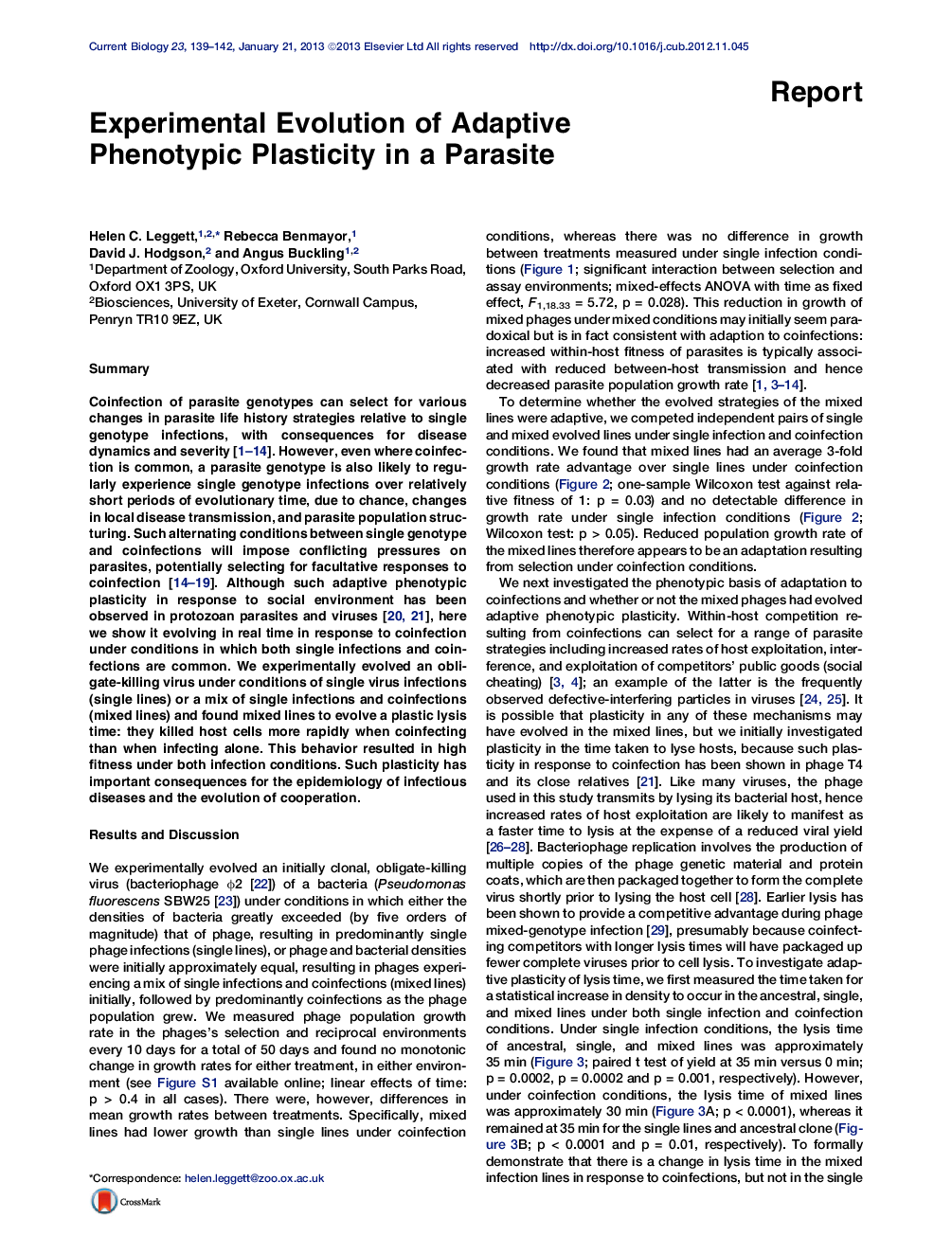| کد مقاله | کد نشریه | سال انتشار | مقاله انگلیسی | نسخه تمام متن |
|---|---|---|---|---|
| 2043086 | 1073325 | 2013 | 4 صفحه PDF | دانلود رایگان |

SummaryCoinfection of parasite genotypes can select for various changes in parasite life history strategies relative to single genotype infections, with consequences for disease dynamics and severity [1, 2, 3, 4, 5, 6, 7, 8, 9, 10, 11, 12, 13 and 14]. However, even where coinfection is common, a parasite genotype is also likely to regularly experience single genotype infections over relatively short periods of evolutionary time, due to chance, changes in local disease transmission, and parasite population structuring. Such alternating conditions between single genotype and coinfections will impose conflicting pressures on parasites, potentially selecting for facultative responses to coinfection [14, 15, 16, 17, 18 and 19]. Although such adaptive phenotypic plasticity in response to social environment has been observed in protozoan parasites and viruses [20 and 21], here we show it evolving in real time in response to coinfection under conditions in which both single infections and coinfections are common. We experimentally evolved an obligate-killing virus under conditions of single virus infections (single lines) or a mix of single infections and coinfections (mixed lines) and found mixed lines to evolve a plastic lysis time: they killed host cells more rapidly when coinfecting than when infecting alone. This behavior resulted in high fitness under both infection conditions. Such plasticity has important consequences for the epidemiology of infectious diseases and the evolution of cooperation.
► Viruses cultured under a mix of single infections and coinfections evolved plasticity
► They killed hosts more rapidly when coinfecting
► This resulted in high fitness under both single infection and coinfection conditions
Journal: - Volume 23, Issue 2, 21 January 2013, Pages 139–142